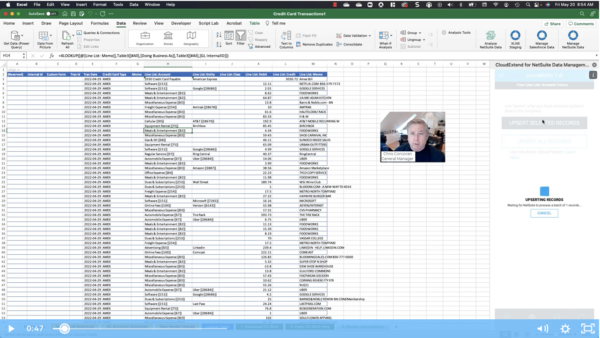Businesses have hundreds to thousands of transactions on a monthly basis. Those transactions come from a multitude of sources, including credit card statements. Often, companies have multiple credit card statements to upload. Unlike expense accounts where employees need to enter an expense report and get reimbursed, corporate credit cards rarely have offsetting transactions in the corresponding ERP system. These transactions all need to be accounted for. Some ERP systems even have a record type to record these transactions. But in the end, each transaction is simply a journal entry with a credit to one account and a debit to another. Knowing this, it makes sense to bypass the transaction data and move right to a journal entry.
Many tasks involving journal entries, such as closing the books in the most efficient way possible, require a better way to upload credit card statements that provides visibility into the transactional data while preventing errors. There are various ways that credit card statements can be uploaded to NetSuite. The best option for a company depends on the needs of the business and the resources available to complete the task.
Options for Importing Credit Card Statements to NetSuite
Manual Data Entry
For most companies, manual data entry of credit card transactions into NetSuite has been the solution of choice simply because it’s what they started with. As companies grow the volume of transactions grows. Then headcount grows in order to manually input transactional data. There’s always a tipping point where companies look for a better solution.
Automation of Credit Card Transactions
Some ERP systems connect directly to banks and credit card companies and data is imported in batches daily. Often, however, the data just sits in a G/L holding account and each transaction needs to be touched by a human again. Still, some automation is better than manual data entry.
Excel for Managing Transactional Data
Unlike most ERP systems, Excel provides a fast and easy way to edit multiple rows and columns of data. From drag-and-drop formulas to Index and Xlookup, there is something to help everyone work. It happens at a rate of speed that is impossible to achieve in the web UI used by most ERP systems. Virtually every credit card company offers the option to export your credit card statement to Excel. Once in Excel, you have a powerful number of tools available to you.
Excel Integration with NetSuite
Manual data entry is a waste of time fraught with risk (like adding an extra 0). Some Excel applications such as ExtendInsights can pre-validate data. It can then update NetSuite records directly from Excel, allowing you to import a month’s worth of credit card transactions in less than 5 minutes from start to finish. Keep a running list of all the merchants and their associated G/L accounts (Sunoco = Auto Expense: Fuel) and then use Excel formulas to get the data into a ExtendInsights Journal Entry template. Choose to have one Journal Entry created for each transaction or import the entire credit card statement as one Journal Entry. ExtendInsights lets business users work faster and smarter. Take a deeper dive with this support article.
Learn more about all you can do with ExtendInsights

